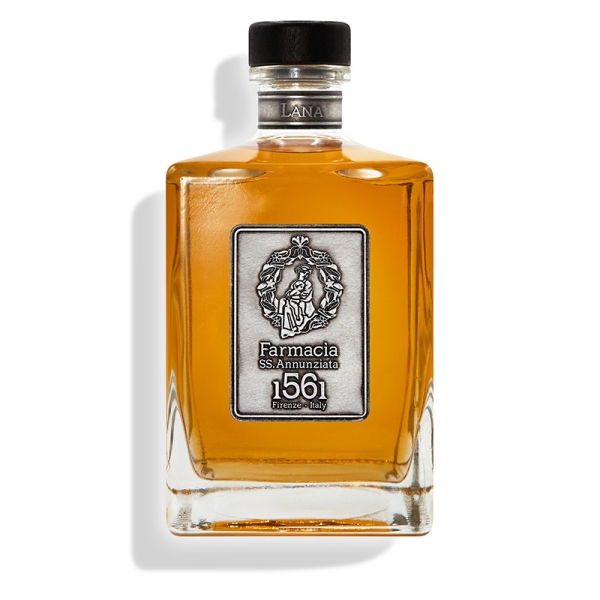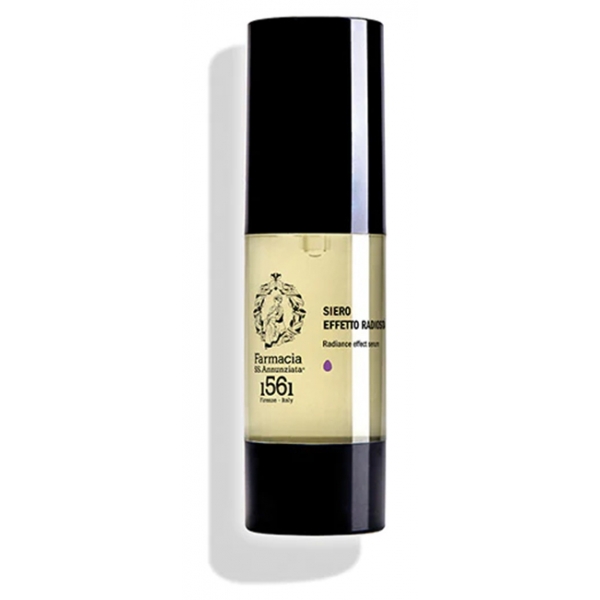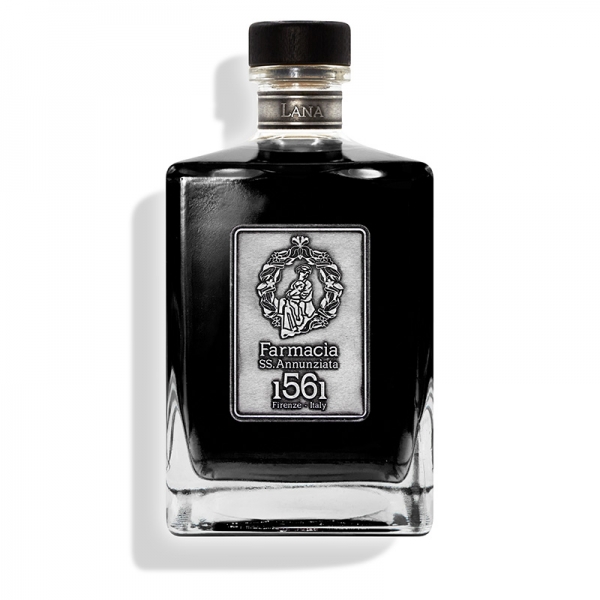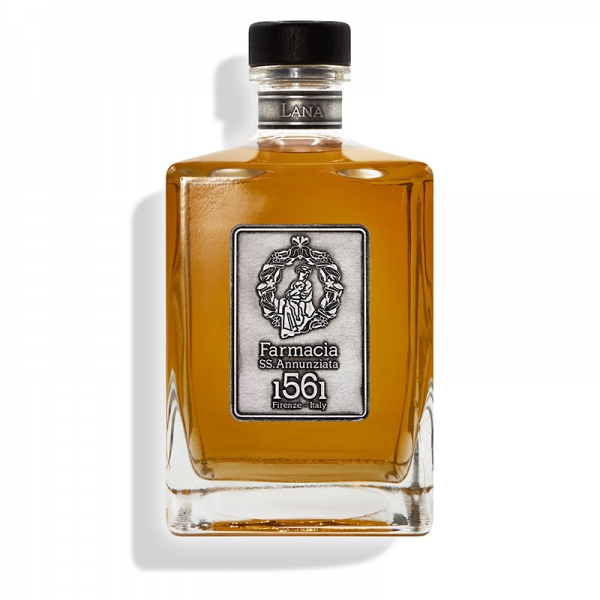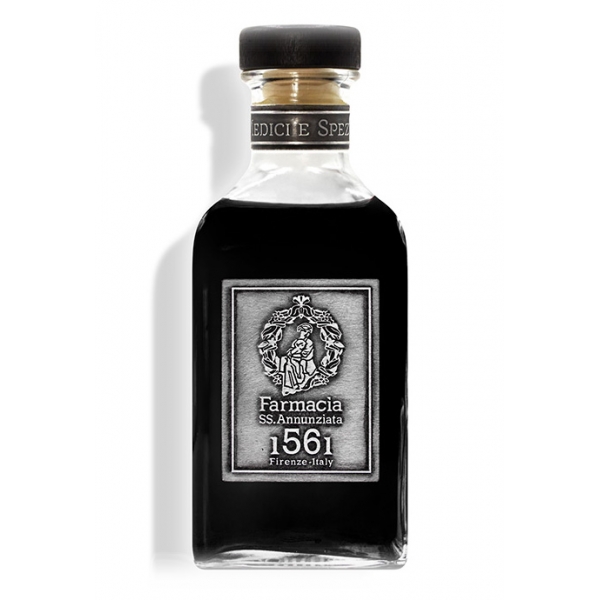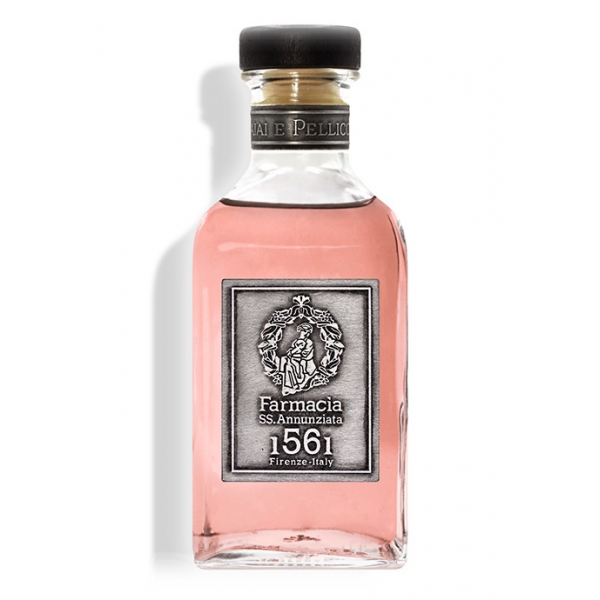No products
Categories
Extra
Farmacia SS. Annunziata 1561
None of The Old Traditions have Been Lost. None of The Benefits of Modern Technology have Been Neglected

In 1561 the chemist Domenico di Vincenzo di Domenico Brunetti was the first manager of the Santissima Annunziata Pharmacy about whom we have information. (A.S.F. – Decima Granducale 3784 cc. 110v. – 111r A.S.F. – Arte dei Medici e Speziali, 12, c.123v.). Since that time the Farmacia Santissima Annunziata has always mantained, apart from the usual prestige typical of every pharmacy at that age, a special tradition in preparing galenic prescriptions and products for hygiene and the beauty of the skin. We have graduated, from ancient processes completely handmade, with pestle and mortar, to special quality controlled preparations made with modern and safe machinery, giving special attention to high standards and throughly researching our prescriptions which are made both with traditional and new raw products.
Presentation Farmacia SS. Annunziata 1561
-
Farmacia SS. Annunziata 1561 - Perfume Cuoio Toscano - 1561 Perfumes -...
Dry and bitter aroma, a smell of fine leather. A well-dressed classy man smoking a cigar in his tweed suit. A heart of incense and patchouli gives the fragrance a smoky and penetrating touch.
132,00 € -
Farmacia SS. Annunziata 1561 - Perfume Accordo Marino - 1561 Perfumes -...
A dive into the blue, waves crashing on the rocks. This ozone perfume with a balsamic heart of eucalyptus recalls a blend of sea breeze and saltwater. Memories of carefree summer days by the sea.
132,00 € -
Farmacia SS. Annunziata 1561 - Arte dei Giudici e Notai - Room Fragrance -...
Arte dei Giudici e Notai: (1212) Corporation which gave a very strong contribution to all the Guilds in view of the continuous need for Judges and Notaries in dealing with the considerable paperwork involved. Among the Notaries, a “Proconsul” was appointed, the highest authority recognized by all the Guilds. 2500 ml.
320,00 € -
Farmacia SS. Annunziata 1561 - Argan Oil - Hair Treatment - Ancient Florence...
Argan oil is a multifunctional vegetable oil suitable for body, face and hair. With nourishing and regenerating properties, it strengthens the hydrolipidic barrier and performs a moisturizing and emollient action.
36,00 € -
Farmacia SS. Annunziata 1561 - Sweet Almond Oil - Hair Treatment - Ancient...
Sweet almond oil is a multi-purpose vegetable oil with countless cosmetic properties, a beauty ally for skin and hair. Restructures and strengthens the hydrolipidic mantle, improves and promotes cell regeneration for renewed, compact and luminous skin.
25,50 € -
Farmacia SS. Annunziata 1561 - Intimate Hygiene Cleanser - Bath and Shower -...
The intimate hygiene solution is an intimate cleanser specifically designed to carry out accurate and correct daily hygiene and to provide well-being and intimate protection. Balanced and soothing formula with a cleansing action that provides an immediate sensation of freshness without altering the natural pH.
27,50 € -
Farmacia SS. Annunziata 1561 - Radiance Effect Serum - Face Masks and Scrubs...
The Radiance Effect Serum performs a delicate and deep peeling, helping to enhance the luminosity and smoothness of greyed, hyperpigmented skin, marked by wrinkles or acne scars.
50,50 € -
Farmacia SS. Annunziata 1561 - Anniversary - Fragrance - Fragrance Line -...
The essence of Florence and its timeless beauty. Florentine spices and leather recall the artisan know-how Florence has always mastered. Endless love for tradition and our homeland enclosed in a bottle. A scented hymn as a tribute to the 460 years anniversary of the brand.
112,00 € -
Farmacia SS. Annunziata 1561 - Giardino dell’Iris - Fragrance - Fragrance...
An invigorating fragrance that evokes Mediterranean landscapes. Lime, bergamot, and tangerine remind of a sunny day in a citrus grove. An overdose of sparkling accords embellished by magnolia and orange blossoms gives life to a sophisticated freshness.
112,00 € -
Farmacia SS. Annunziata 1561 - Arte dei Medici e Speziali - Room Fragrance -...
Arte dei Medici e Speziali: (1349) The old doctors (medici) practised medicine and surgery, prepared the medicines to administer to patients and were also profound philosophy scholars. The pharmacists (speziali) on the other hand, obtained and sold the herbs, drugs and spices needed to prepare medicines. They also traded in perfumes and essences, as well...
320,00 € -
Farmacia SS. Annunziata 1561 - Arte dei Mercatanti - Room Fragrance -...
Arte dei Mercatanti: (1182) The Florentine entrepreneurs who belonged to this ancient corporation imported rough cloth from abroad, refining and finishing it and then selling it. Together they formed powerful trading companies, opening up various branches in many European cities and in North Africa, making huge profits from their trade and becoming known...
320,00 € -
Farmacia SS. Annunziata 1561 - Arte Vaiai e Pellicciai - Room Fragrance -...
Arte dei Vaiai e Pellicciai: (1266) The vair workers specialized in working squirrel skins and the furriers all other hides. From the raw hides, the vair workers and furriers obtained refined garments by tanning and subsequent production processes. The transformation from spiny and solitary bush to refined and sensual flower; an explosion of rosy...
320,00 € -
Farmacia SS. Annunziata 1561 - Arte del Cambio - Room Fragrance - Fragrance...
Arte del Cambio: (1202) The Florentines excelled in this activity, which consisted in exchanging the numerous foreign currencies with that of Florence (gold florin), in granting loans and in sending currency from one country to another by means of “letters of exchange”, a method which became widespread to safely transfer large amounts of money. 2500 ml.
320,00 € -
Farmacia SS. Annunziata 1561 - Arte della Lana - Room Fragrance - Fragrance...
Arte della Lana: (1317) This Guild was perhaps the major source of wealth and power of Florence: it did in fact help spread the city’s products worldwide. It saw to all the various processes from the raw baled wool through to the final cloth. A “wool stamp” was stitched onto each Florentine product, to protect it against counterfeiting. 2500 ml.
320,00 € -
Farmacia SS. Annunziata 1561 - Arte della Seta - Room Fragrance - Fragrance...
Arte della Seta: (1248) Originally called “Arte di Por Santa Maria” due to its vicinity to the namesake city gate. Thanks to the increase in the production of fabrics and great expansion of trade, the association took the name of Arte della Seta. Its members worked silk drapes woven with gold, silver and every other colour. Freshness of a lightweight and...
320,00 € -
Farmacia SS. Annunziata 1561 - Arte dei Giudici e Notai - Room Fragrance -...
Arte dei Giudici e Notai: (1212) Corporation which gave a very strong contribution to all the Guilds in view of the continuous need for Judges and Notaries in dealing with the considerable paperwork involved. Among the Notaries, a “Proconsul” was appointed, the highest authority recognized by all the Guilds.
75,00 € -
Farmacia SS. Annunziata 1561 - Arte dei Medici e Speziali - Room Fragrance -...
Arte dei Medici e Speziali: (1349) The old doctors (medici) practised medicine and surgery, prepared the medicines to administer to patients and were also profound philosophy scholars. The pharmacists (speziali) on the other hand, obtained and sold the herbs, drugs and spices needed to prepare medicines. They also traded in perfumes and essences, as well...
75,00 € -
Farmacia SS. Annunziata 1561 - Arte dei Mercatanti - Room Fragrance -...
Arte dei Mercatanti: (1182) The Florentine entrepreneurs who belonged to this ancient corporation imported rough cloth from abroad, refining and finishing it and then selling it. Together they formed powerful trading companies, opening up various branches in many European cities and in North Africa, making huge profits from their trade and becoming known...
75,00 € -
Farmacia SS. Annunziata 1561 - Arte dei Vaiai e dei Pellicciai - Room...
Arte dei Vaiai e Pellicciai: (1266) The vair workers specialized in working squirrel skins and the furriers all other hides. From the raw hides, the vair workers and furriers obtained refined garments by tanning and subsequent production processes. The transformation from spiny and solitary bush to refined and sensual flower; an explosion of rosy...
75,00 € -
Farmacia SS. Annunziata 1561 - Arte del Cambio - Room Fragrance - Fragrance...
Arte del Cambio: (1202) The Florentines excelled in this activity, which consisted in exchanging the numerous foreign currencies with that of Florence (gold florin), in granting loans and in sending currency from one country to another by means of “letters of exchange”, a method which became widespread to safely transfer large amounts of money.
75,00 € -
Farmacia SS. Annunziata 1561 - Arte della Lana - Room Fragrance - Fragrance...
Arte della Lana: (1317) This Guild was perhaps the major source of wealth and power of Florence: it did in fact help spread the city’s products worldwide. It saw to all the various processes from the raw baled wool through to the final cloth. A “wool stamp” was stitched onto each Florentine product, to protect it against counterfeiting.
75,00 €





